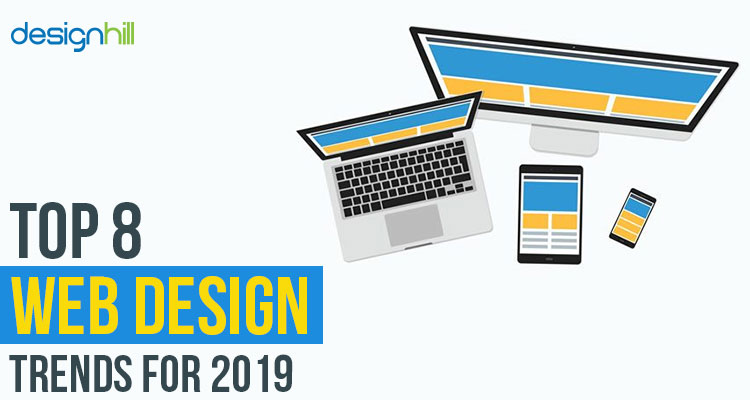The Development Of Internet Site Style: From Past To Existing
The Development Of Internet Site Style: From Past To Existing
Blog Article
Personnel Writer-Pappas Trolle
In the past, internet sites were basic and concentrated on details. Navigating was direct, and design was for desktop computers. Currently, individual experience is essential. Data overviews styles for very easy navigation. Receptive layouts suit different tools. Today, dark mode minimizes strain, and minimalist food selections boost navigating. Interactive features involve users, and strong visuals stand out. AI assimilation improves engagement. See exactly how design has progressed to boost your online journey.
Early Days of Website Design
In the early days of web design, simplicity preponderated. Web sites were standard, with minimal shades, fonts, and designs. The emphasis was on giving details rather than fancy visuals. Users accessed the net through sluggish dial-up connections, so speed and capability were essential.
Navigation menus were straightforward, normally located on top or side of the page. Internet sites were developed for desktop computers, as mobile browsing had not been yet widespread. Material was king, and designers prioritized very easy readability over intricate style aspects.
HTML was the main coding language made use of, and developers had to function within its restrictions. Animations and interactive functions were minimal contrasted to today's requirements. Web sites were static, with little vibrant web content or tailored individual experiences.
Rise of User-Focused Style
With the evolution of web site style, a change in the direction of user-focused layout concepts has actually become progressively popular. Today, developing websites that focus on customer experience is vital for engaging visitors and attaining service objectives. User-focused design involves comprehending the demands, preferences, and habits of your target audience to customize the website's layout, web content, and features appropriately.
Developers now carry out comprehensive study, such as user surveys and use screening, to collect insights and responses directly from users. This data-driven approach helps in developing instinctive navigation, clear calls-to-action, and aesthetically enticing user interfaces that resonate with visitors. By placing https://www.google.com/maps/place/Moon+and+Owl+Marketing/@32.9757271,-106.5344695,1840583m/data=!3m1!1e3!4m6!3m5!1s0x864ddeaa4179705b:0x488d41d2cc6b9750!8m2!3d32.9757271!4d-97.5696258!16s%2Fg%2F11b6mpccrg?entry=ttu&g_ep=EgoyMDI1MDIxMS4wIKXMDSoJLDEwMjExNDUzSAFQAw%3D%3D at the facility of the layout procedure, web sites can deliver a much more tailored and delightful experience.
Responsive style has actually also become a crucial aspect of user-focused style, ensuring that websites are maximized for different tools and screen dimensions. This flexibility boosts availability and use, catering to the varied methods users engage with web sites today. In essence, the increase of user-focused layout signifies a change in the direction of creating digital experiences that prioritize the demands and assumptions of the end user.
Modern Trends in Web Design
Explore the current trends shaping web design today. One noticeable pattern is dark setting layout, offering a streamlined and modern-day appearance while decreasing eye stress in low-light atmospheres. Another essential pattern is minimalist navigating, streamlining menus and improving user experience by concentrating on essential elements. Integrating micro-interactions, such as computer animated switches or scrolling results, can produce an extra interesting and interactive web site. Responsive design continues to be essential, making certain smooth individual experiences across various tools. Additionally, utilizing bold typography and asymmetrical formats can add aesthetic rate of interest and draw attention to specific web content.
Incorporating AI innovation, like chatbots for consumer support or personalized referrals, improves user interaction and improves procedures. Ease of access has likewise become a substantial pattern, with designers prioritizing inclusive layout methods to satisfy varied customer demands. Embracing sustainability by enhancing internet site performance for speed and performance is one more emerging trend in website design. Working together with customer comments and data analytics to iterate and boost layout continually is vital for staying pertinent in the ever-evolving electronic landscape. By accepting these modern patterns, you can produce an aesthetically attractive, easy to use site that reverberates with your target market.
Verdict
As you review the evolution of website layout from the very early days to now, you can see just how user-focused style has actually come to be the driving pressure behind modern patterns.
Embrace the trip of adjustment and adaptation in website design, always keeping the user experience at the forefront.
Remain current with the most recent fads and modern technologies, and never ever quit progressing your strategy to produce visually magnificent and user-friendly websites.
Advance, adjust, and create - the future of website design remains in your hands.
